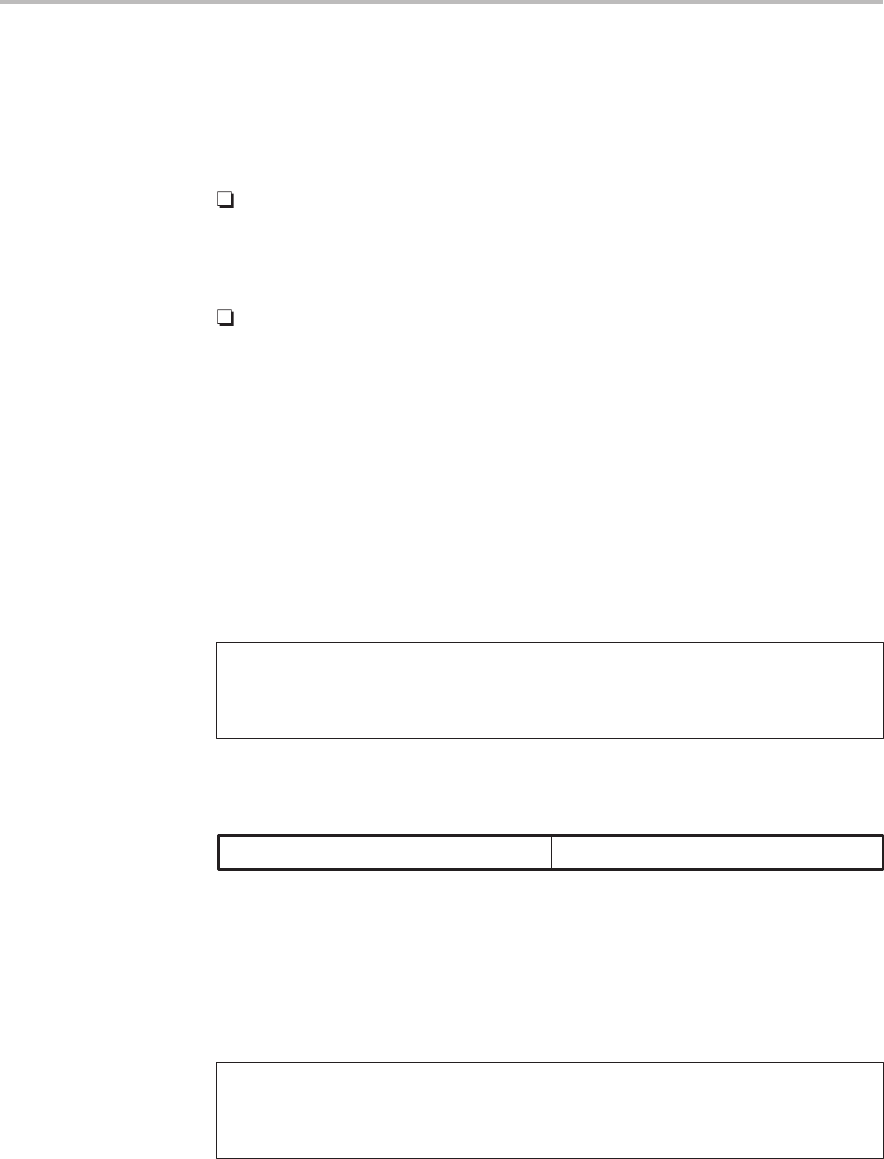User manual
Table Of Contents
- Read This First
- Contents
- Figures
- Tables
- Examples
- Cautions
- Introduction
- Architectural Overview
- Central Processing Unit
- Memory and I/O Spaces
- Program Control
- Addressing Modes
- Assembly Language Instructions
- Instruction Set Summary
- How To Use the Instruction Descriptions
- Instruction Descriptions
- ABS
- ABS
- ADD
- ADD
- ADD
- ADD
- ADDC
- ADDC
- ADDS
- ADDS
- ADDT
- ADDT
- ADRK
- AND
- AND
- AND
- APAC
- APAC
- B
- BACC
- BANZ
- BANZ
- BCND
- BCND
- BIT
- BIT
- BITT
- BITT
- BLDD
- BLDD
- BLDD
- BLDD
- BLDD
- BLPD
- BLPD
- BLPD
- BLPD
- CALA
- CALL
- CC
- CC
- CLRC
- CLRC
- CMPL
- CMPR
- DMOV
- DMOV
- IDLE
- IN
- IN
- INTR
- LACC
- LACC
- LACC
- LACL
- LACL
- LACL
- LACT
- LACT
- LAR
- LAR
- LAR
- LDP
- LDP
- LPH
- LPH
- LST
- LST
- LST
- LST
- LT
- LT
- LTA
- LTA
- LTD
- LTD
- LTD
- LTP
- LTP
- LTS
- LTS
- MAC
- MAC
- MAC
- MAC
- MACD
- MACD
- MACD
- MACD
- MACD
- MAR
- MAR
- MPY
- MPY
- MPY
- MPYA
- MPYA
- MPYS
- MPYS
- MPYU
- MPYU
- NEG
- NEG
- NMI
- NOP
- NORM
- NORM
- NORM
- OR
- OR
- OR
- OUT
- OUT
- PAC
- POP
- POP
- POPD
- POPD
- PSHD
- PSHD
- PUSH
- RET
- RETC
- ROL
- ROR
- RPT
- RPT
- SACH
- SACH
- SACL
- SACL
- SAR
- SAR
- SBRK
- SETC
- SETC
- SFL
- SFR
- SFR
- SPAC
- SPH
- SPH
- SPL
- SPL
- SPLK
- SPLK
- SPM
- SQRA
- SQRA
- SQRS
- SQRS
- SST
- SST
- SUB
- SUB
- SUB
- SUB
- SUBB
- SUBB
- SUBC
- SUBC
- SUBS
- SUBS
- SUBT
- SUBT
- TBLR
- TBLR
- TBLR
- TBLW
- TBLW
- TBLW
- TRAP
- XOR
- XOR
- XOR
- ZALR
- ZALR
- On-Chip Peripherals
- Synchronous Serial Port
- Asynchronous Serial Port
- TMS320C209
- Register Summary
- TMS320C1x/C2x/C2xx/C5x Instruction Set Comparison
- Program Examples
- Submitting ROM Codes to TI
- Design Considerations for Using XDS510 Emulator
- E.1 Designing Your Target System’s Emulator Connector (14-Pin Header)
- E.2 Bus Protocol
- E.3 Emulator Cable Pod
- E.4 Emulator Cable Pod Signal Timing
- E.5 Emulation Timing Calculations
- E.6 Connections Between the Emulator and the Target System
- E.7 Physical Dimensions for the 14-Pin Emulator Connector
- E.8 Emulation Design Considerations
- Glossary
- Index

Immediate Addressing Mode
6-2
6.1 Immediate Addressing Mode
In immediate addressing, the instruction word contains a constant to be ma-
nipulated by the instruction. The ’C2xx supports two types of immediate ad-
dressing:
Short-immediate addressing. Instructions that use short-immediate ad-
dressing take an 8-bit, 9-bit, or 13-bit constant as an operand. Short-im-
mediate instructions require a single instruction word, with the constant
embedded in that word.
Long-immediate addressing. Instructions that use long-immediate ad-
dressing take a 16-bit constant as an operand and require two instruction
words. The constant is sent as the second instruction word. This 16-bit val-
ue can be used as an absolute constant or as a 2s-complement value.
6.1.1 Examples of Immediate Addressing
In Example 6–1, the immediate operand is contained as a part of the RPT
instruction word. For this RPT instruction, the instruction register will be loaded
with the value shown in Figure 6–1. Immediate operands are preceded by the
symbol #.
Example 6–1. RPT Instruction Using Short-Immediate Addressing
RPT #99 ;Execute the instruction that follows RPT
;100 times.
Figure 6–1. Instruction Register Contents for Example 6–1
0123456789101112131415
1100011011011101
8-bit constant = 99RPT opcode for immediate addressing
In Example 6–2, the immediate operand is contained in the second instruction
word. The instruction register receives, consecutively, the two 16-bit values
shown in Figure 6–2.
Example 6–2. ADD Instruction Using Long-Immediate Addressing
ADD #16384,2 ;Shift the value 16384 left by two bits
;and add the result to the accumulator.










